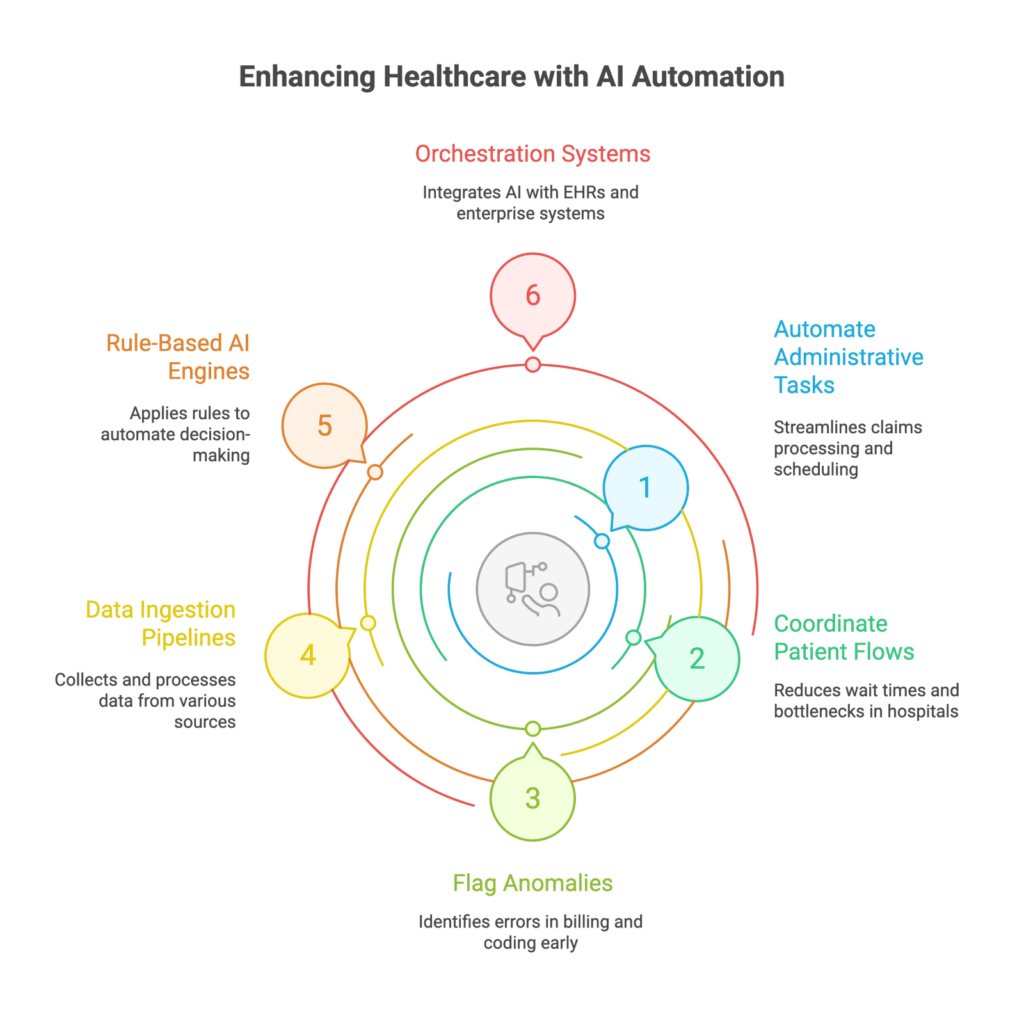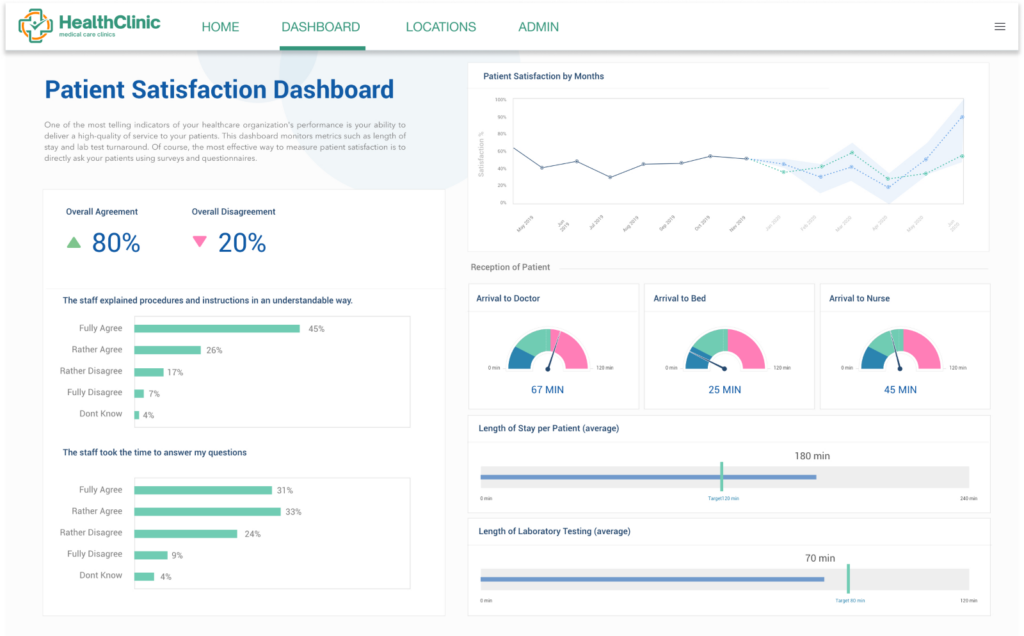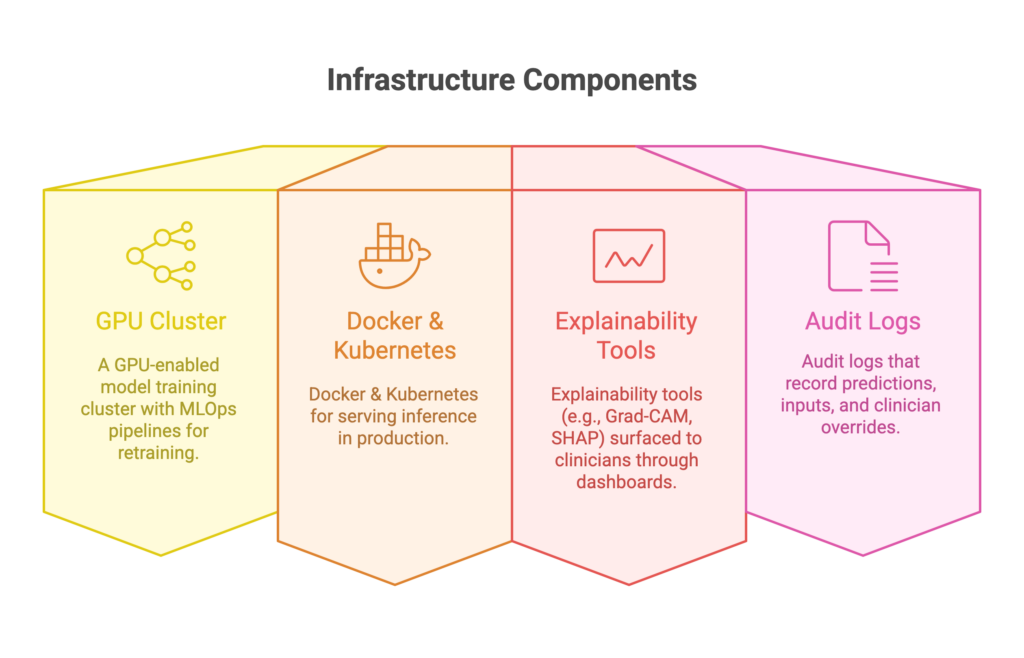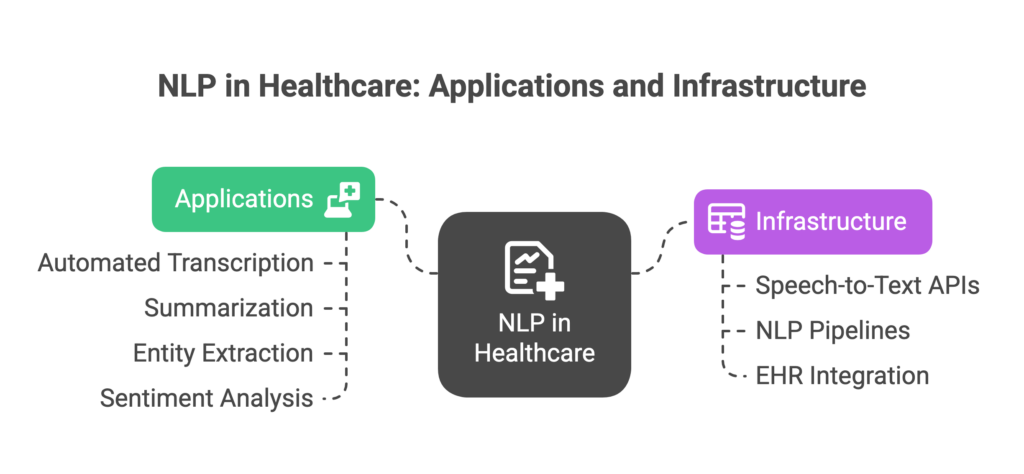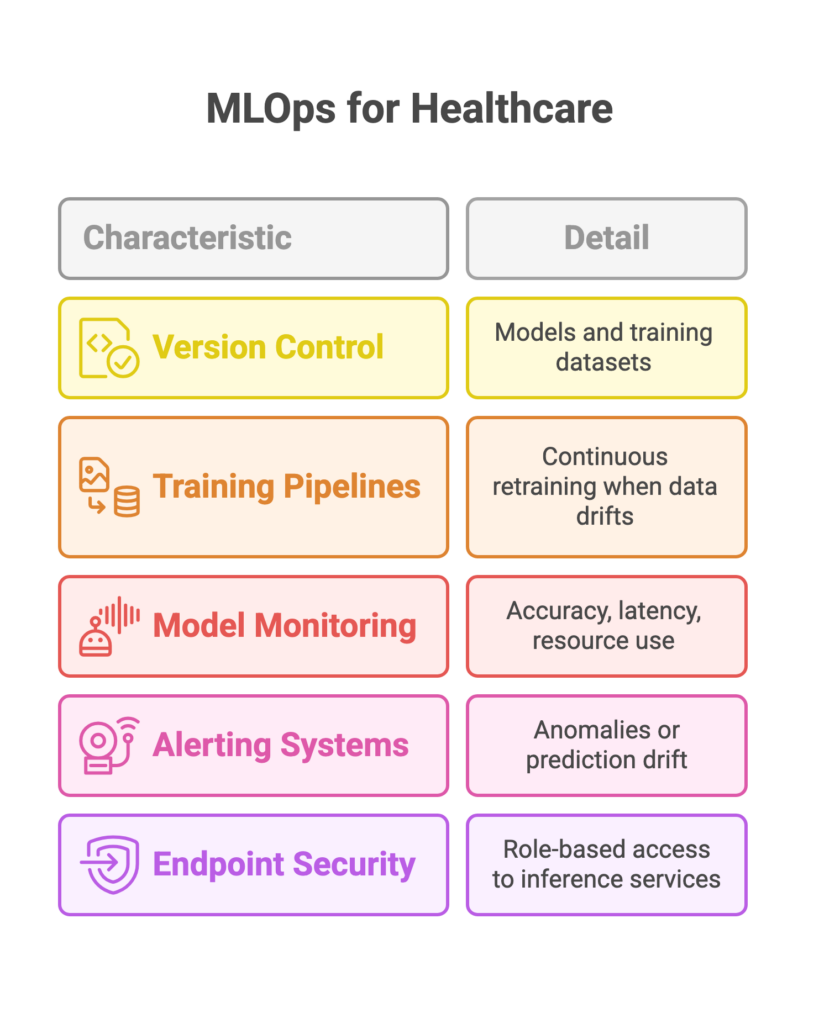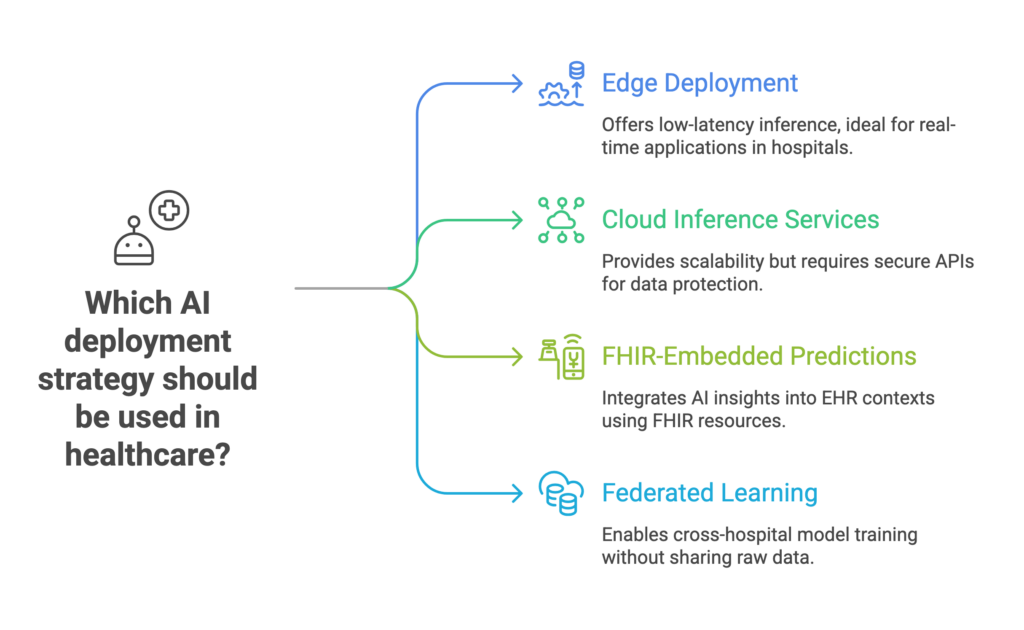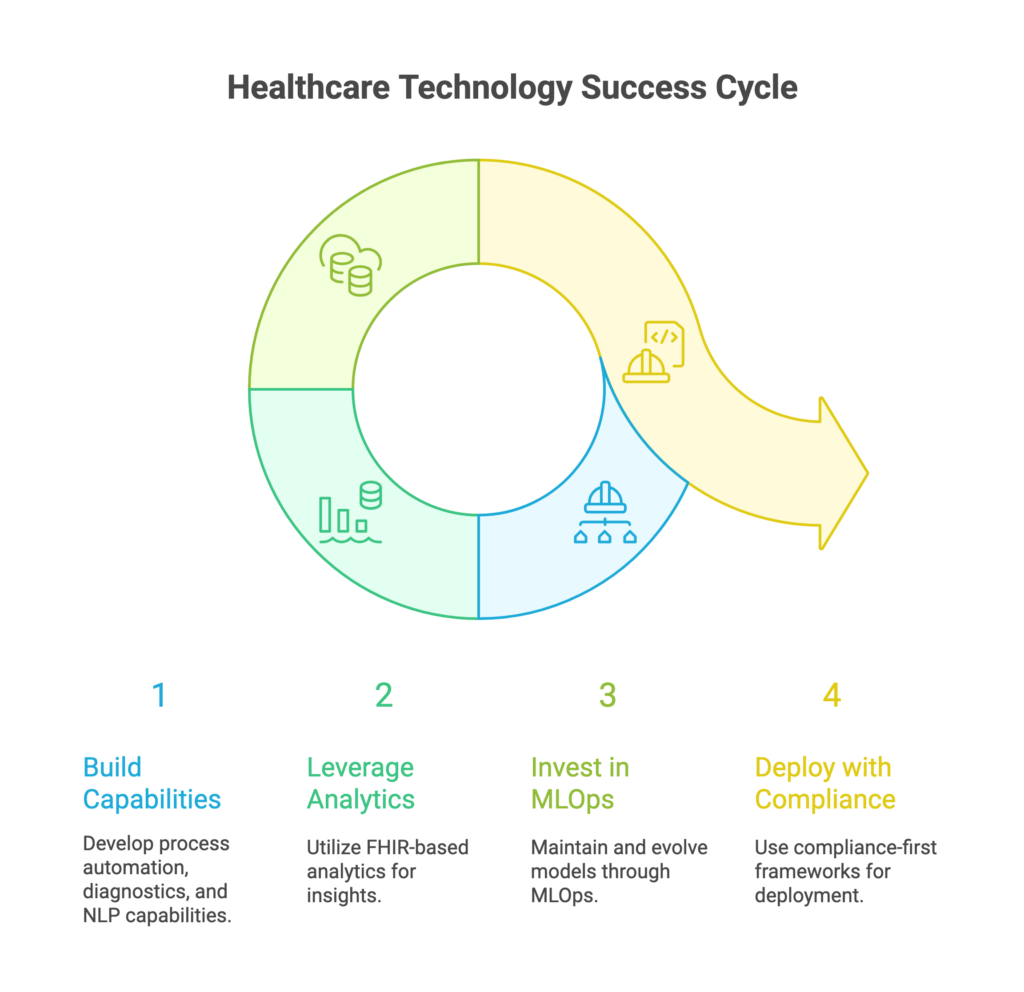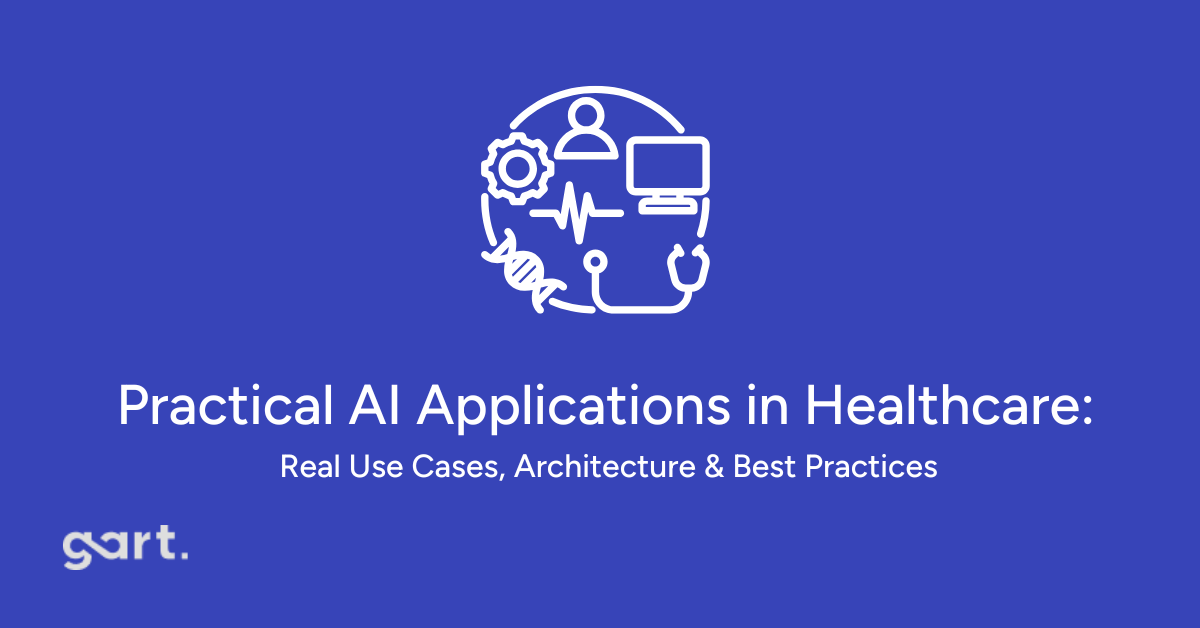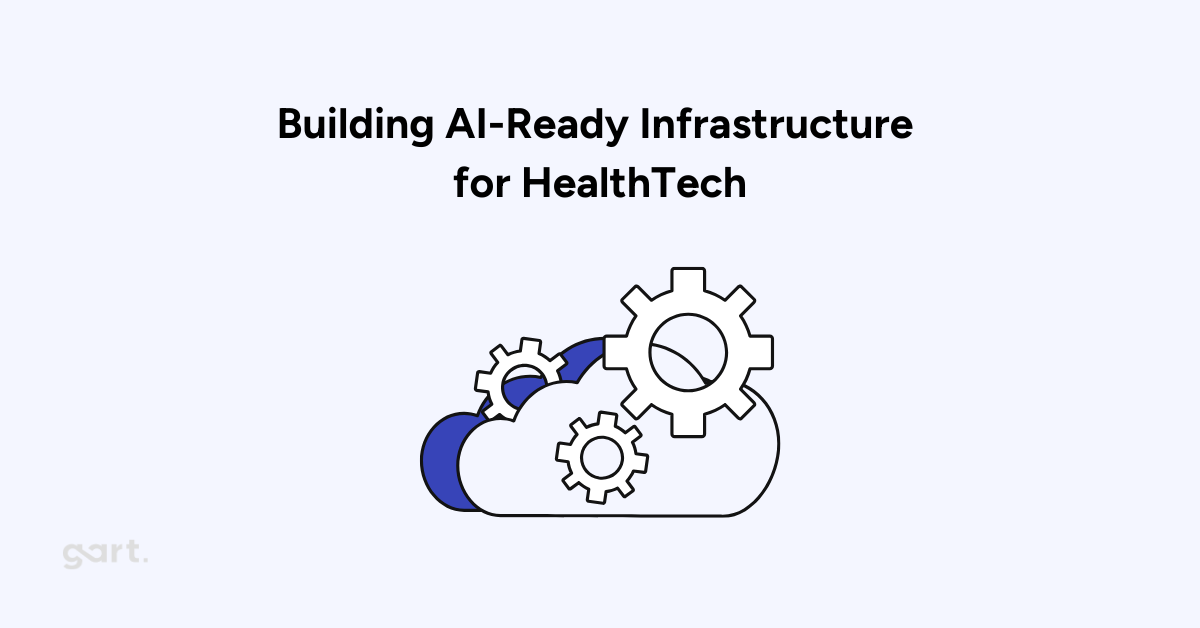
Ready to Build Smarter HealthTech Systems?
Digital transformation in healthcare is happening now. But behind every AI-powered diagnostic tool or predictive model lies something less glamorous but essential: IT infrastructure.
This guide dives deep into the what, why, and how of AI infrastructure in HealthTech, packed with real-world examples, strategic steps, and insider tips to future-proof your systems.
Why Healthtech Needs Purpose-Built AI Infrastructure
AI isn’t a software plugin you download — it’s a living, breathing engine that relies on the right digital environment to function. In HealthTech, that environment must do more than just run — it needs to scale, self-correct, protect, and perform without fail.
Here’s why cloud infrastructure makes all the difference:
Scale on Demand: as models get more sophisticated and datasets grow (think imaging, genomic data, or EHR), your infrastructure must scale elastically, without outages or bottlenecks.
Optimize Costs: streamlining compute resources (GPUs, storage, data transfer) cuts cloud bills and reduces wastage. Efficient architecture pays for itself over time.
Zero Downtime: AI in healthcare must be resilient — no one can afford downtime in the ICU or during patient intake. Fault-tolerant design ensures 24/7 performance.
Speed to Market: agile DevOps, CI/CD pipelines, and containerization accelerate innovation — so your product hits the market faster and evolves in real time.
When the infrastructure isn’t there, even the most powerful AI models can stall. That’s why infrastructure is more than a foundation — it’s the nervous system of your AI product.
Core Components of AI Infrastructure in HealthTech
A high-performing AI infrastructure is a symphony of technologies working in sync.
At Gart, we help orchestrate these layers for maximum harmony.
Layer Components Purpose / Benefits 1. Hardware Layer - GPUs/TPUs: For model training, especially deep learning - CPUs: Ideal for inference in production systems - NVMe Storage: Lightning-fast access to massive datasets Provides computational power and high-speed storage required for AI workloads 2. Software Stack - ML Frameworks: TensorFlow, PyTorch, JAX (custom-fitted for healthcare data) - Data Pipelines: Apache Kafka, Spark (real-time data processing) - Containerization: Docker, Podman (reproducible environments) Builds, trains, and deploys AI models efficiently in robust environments 3. Orchestration & Monitoring - Kubernetes: Orchestrates deployment and scales containers - Prometheus & Grafana: Real-time monitoring and visualisation - CI/CD Pipelines: Jenkins, ArgoCD, GitLab CI (automated deployments) Ensures scalable, resilient, and automated AI operations 4. Security & Governance - RBAC & IAM: Controls data access - Compliance Frameworks: HIPAA, GDPR, SOC2 - Audit Trails & Encryption: Protects data in motion and at rest Guarantees compliance, data privacy, and patient trust 5. Infrastructure as Code (IaC) - Terraform: Deploys secure, version-controlled environments across AWS, Azure, or hybrid clouds Enables rapid, repeatable, and secure infrastructure management
How AI Infrastructure Actually Works
Let’s break down what an AI infrastructure pipeline looks like in action:
Data Ingestion From wearable devices, EHRs, CT scans, and lab results, data flows into your system continuously.
Data Transformation Raw inputs are cleaned, normalized, and structured using tools like Spark or Hadoop.
Model Training Training happens on high-performance GPUs, orchestrated via Kubernetes to manage compute usage.
Model Packaging & Deployment Models are containerized and deployed into real-time production systems using CI/CD pipelines.
Inference Engine Live predictions are served in milliseconds to doctors or backend systems using APIs or edge devices.
Monitoring & Feedback Loop Every prediction is logged, audited, and used to improve models through continuous retraining.
This isn't a static system — it's a loop. The more it runs, the smarter it gets.
Your Blueprint: How to Build AI Infrastructure in HealthTech
Building this isn’t about picking tools randomly — it’s a layered strategy.
Here’s the plan:
Step 1: Define the Use Case
Real-time ICU monitoring?
Radiology image analysis?
Chatbots for triage?
Something else?
Use Case you are trying to solve and hypothesis behind it – must go first!
Define the "why" (and why people pay you, for your solution), which goes before anything else.
Step 2: Scope the Data Requirements
What’s the data volume, velocity, and variety?
Do you need batch processing, streaming, or both?
Step 3: Architect Your Stack
Cloud-native, hybrid, or on-prem?
How will security, logging, and data lineage be handled?
Step 4: Select the Right Tech
Choose tools that your team knows — or partner with experts like Gart Solutions to guide implementation.
Step 5: Enforce Security & Compliance
Don’t treat this as an afterthought. Start with HIPAA-readiness and future-proof your stack.
Step 6: Automate & Iterate
With IaC, build environments with one click. Use telemetry to refine continuously.
What Should Be in Tech Stack for HealthTech Project?
Layer Tech Examples Ingestion & Storage Kafka, Hadoop, Cassandra, S3 Processing & Analytics Spark, Flink ML Frameworks TensorFlow, PyTorch Containerization Docker, Podman Orchestration Kubernetes, Mesos CI/CD & DevOps Jenkins, GitLab CI, ArgoCD Monitoring & Logging Prometheus, Grafana, ELK Security & Compliance IAM, RBAC, encryption, audit logs
And always combine with:
SLA-driven monitoring
MLPerf benchmarking
Cross-functional collaboration
AI Infrastructure Projects in HealthTech: Real-World Use Cases
Across the global health and AI sectors, forward-thinking organizations are building powerful infrastructure to turn AI from theory into impact.
Below is a curated list of real-world projects showcasing how AI-ready infrastructure drives outcomes — and how Gart Solutions can deliver the architecture to support them.
Smart Hospital Systems
Cleveland Clinic
Real-time AI sepsis alerts are built into the EHR system, reducing ICU mortality and time to treatment.
The clinic requires GPU-enabled inference, EHR access via FHIR APIs, and HIPAA-compliant pipelines.
Oulu University Hospital (Finland):
AI for Operational Efficiency
Memorial Regional Hospital (USA):
AI-based bed management system predicted availability with > 90% accuracy, saving millions and shortening ED wait times.
The hospital requires the ingestion of scheduling and patient flow data, and Gart can help utilize AI for operational efficiency of the hospital.
Midwest Health System:
Workforce optimization AI, orchestrated via Kubernetes, saving $8.7M/year.
Ingested shift logs, patient acuity, and census data for predictive modeling.
Infrastructure focus: Secure data lakes, predictive pipelines, and automated deployment frameworks — exactly what Gart delivers through IaC and MLOps.
Research & Federated AI
Mayo Clinic Platform
Federated AI across multiple hospitals, sharing model weights, not data — for privacy-preserving research.
Owkin
Distributed AI training for drug discovery using federated learning infrastructure.
Gart value: Expertise in secure multi-cloud orchestration, encrypted communication, model governance, and federated training setups.
Radiology & Imaging AI
Aidoc Medical
Always-on AI running at radiology workstations and backend servers — automatically flags emergencies (e.g., stroke, hemorrhage) across 1,500+ hospitals.
Portal Telemedicina (Brazil)
Google Cloud-powered AI reading chest x-rays in rural clinics with edge-based diagnostics and cloud-based monitoring.
What’s required: High-speed NVMe storage, container orchestration (K8s), real-time inference APIs, model drift monitoring — all supported by Gart’s infrastructure design.
National & Cross‑Institutional Research Networks
Swiss Personalized Health Network (SPHN)
Nationally governed data architecture for AI-driven precision medicine.
Infrastructure insight: These use cases need interoperable APIs (FHIR, HL7), robust governance frameworks, secure compute clusters, and cloud-native elasticity, and Gart can deliver that.
Summary Table: AI Use Cases vs Infrastructure Needs
Project Type Infrastructure Components Required Smart Hospitals 5G, IoT, Edge compute, EHR APIs Operational AI Data ingestion, analytics pipelines, orchestration Federated AI Secure model sharing, distributed training, encrypted comms Radiology/Diagnostics GPU clusters, NVMe storage, real-time inference
Who’s Behind the Curtain? Common Roles in AI Infrastructure
Role Responsibility AI Infrastructure Engineer Designs and scales compute/storage pipelines Data Scientist Develops and validates AI models DevOps Engineer Builds CI/CD, containerization, IaC ML Engineer Bridges models into production systems Compliance Officer Ensures HIPAA, GDPR, SOC2 adherence
Gart helps you assemble this team or supplements your internal one, based on project phase and complexity.
Let Gart Solutions Lead the Way
With deep expertise in cloud architecture, compliance automation, and AI enablement, Gart Solutions provides:
- Turnkey AI infrastructure for health startups and enterprises - Compliance-ready deployment stacks via Terraform and IaC - Real-time observability and SLA-backed performance - Support for EHR integration (Epic, Athena, Cerner) using FHIR APIs - Optional edge-AI and federated learning architectures
We blend the speed and modern practices with the depth, security, and healthcare domain expertise you won’t find in generalist vendors.
Start Building — The Right Way
Infrastructure isn’t the sexiest part of AI, but it’s the most important.
Done wrong, it leads to slow deployments, security nightmares, and underperforming models. Done right, it’s your secret weapon.
Let Gart Solutions help you build the AI infrastructure that powers breakthrough patient care, real-time diagnostics, and compliant innovation at scale.
Get a sample of IT Audit
Sign up now
Get on email
Loading...
Thank you!
You have successfully joined our subscriber list.
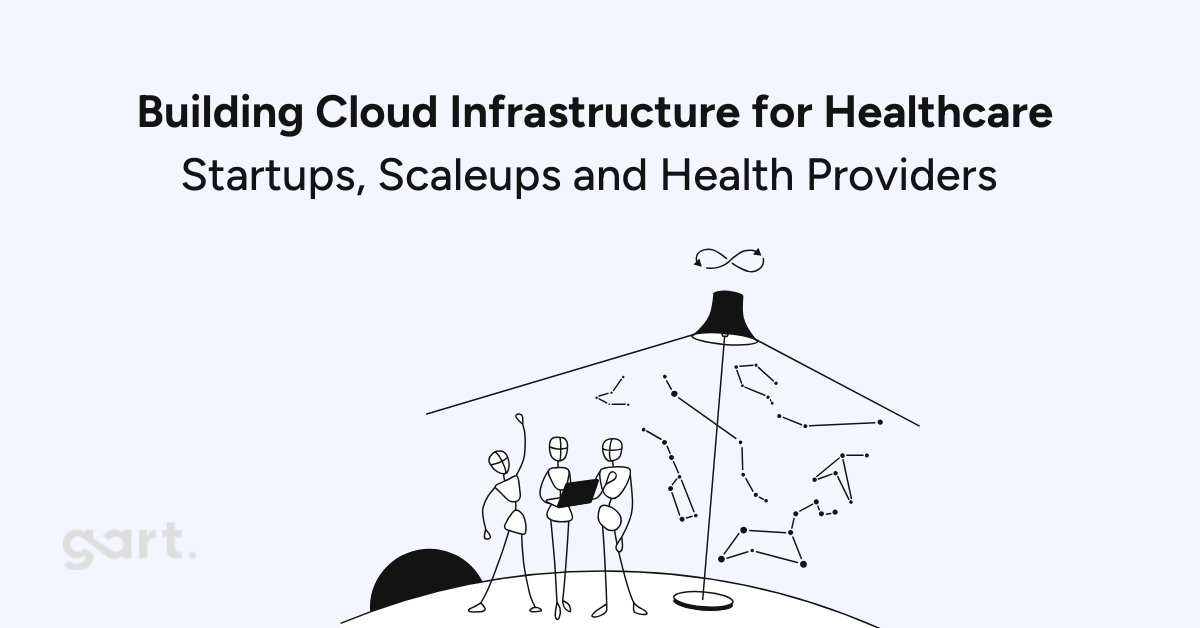
Global Healthcare Cloud Computing Market Overview: Growth Forecast
As of 2023, the global market for cloud computing in healthcare was valued at approximately USD 61.8 billion. Analysts forecast a substantial increase, with the market expected to reach around USD 236.4 billion by 2034. This growth reflects a projected compound annual growth rate (CAGR) of 13.05% over the 2024 – 2034 period.
Why Cloud is Reshaping Healthcare
Healthcare today isn’t what it was five years ago. It’s no longer about simply digitizing records; it’s about completely transforming care delivery.
Telemedicine, AI diagnostics, real-time patient monitoring, predictive analytics – all these innovations depend on powerful, secure, and compliant cloud infrastructure.
Imagine a cardiologist in London remotely reviewing echocardiograms uploaded in real-time by a rural clinic in Kenya. Or an oncology platform analyzing millions of cancer cases globally to recommend precision treatments instantly. Without cloud computing, these breakthroughs remain pipe dreams.
Startups need agility, scaleups need reliability, and healthcare providers need seamless integration of legacy systems with modern cloud-native solutions.
The Role of Digital Health Expertise in Cloud Transformation
Building cloud infrastructure for HealthTech isn’t like deploying generic SaaS apps. It requires deep domain expertise in digital health, understanding:
Clinical workflows
Data security and privacy risks
Regulatory frameworks like HIPAA and GDPR
Interoperability standards (HL7, FHIR)
Gart Solutions combines engineering excellence with healthcare-specific knowledge and is committed to delivering:
Compliance-first architectures that stand up to audits from day one
Security by design, including encryption everywhere, robust IAM, and automated threat detection
Scalable, resilient environments capable of supporting AI workloads, telehealth platforms, and real-time data integrations
Cost-optimized deployments to maximize operational ROI for startups and large providers alike.
Healthcare demands a level of precision and risk management that only specialized partners can deliver.
How Gart Solutions Transforms Healthcare Startups for Growth
"HealthTech startups face a brutal reality: if your MVP isn’t compliant, secure, and scalable from day one, it’s dead on arrival. Unlike other tech verticals, healthcare startups can’t launch a quick beta product and “fix compliance later.”
Cloud Infrastructure for Healthcare Startups Must be:
a) Designed with compliance embedded
HIPAA and GDPR demand encryption, access controls, audit logs, and breach notification capabilities. Using AWS, Azure, or GCP’s HIPAA-eligible services isn’t enough; they must be configured precisely to meet requirements.
b) Built privacy by design Protecting PHI (Protected Health Information) demands tokenization, data minimization, pseudonymization, and strict user consent management.
c) Stay agile to pivot fast Containerized deployments, Infrastructure as Code, and microservices enable rapid iteration without compromising compliance.
This is how Gart Solutions empowers HealthTech startups
Our expertise includes:
Rapid deployment of compliance-ready cloud environments
Security automation to maintain strong postures with limited in-house teams
Cost-optimized architecture using spot instances, serverless technologies, and auto-scaling to maximize startup runway
AI/ML infrastructure design for health diagnostics and decision support tools.
For example, a startup developing an AI-powered skin cancer screening tool can leverage Gart’s engineering to train models on HIPAA-compliant GPU instances and deploy them globally with secure, low-latency APIs, enabling fast market entry and investor confidence.
2. Cloud Infrastructure for HealthTech Scaleups
When a HealthTech startup becomes a scaleup, the challenge shifts from finding product-market fit to supporting explosive growth reliably and securely.
Imagine a telehealth platform growing from 5,000 consultations to 500,000 in a year. Without robust architecture, downtime, latency, and security gaps become inevitable.
Gart Solutions enables scaleups to:
Implement horizontal scalability - using Kubernetes and load balancing to support unpredictable user spikes without performance drops
Deploy multi-region architectures - ensuring global low-latency access while adhering to data residency regulations
Scale databases effectively - managed services with read replicas and automated failovers to eliminate bottlenecks
Automate security at scale - integrating vulnerability scanning, automated backups, and real-time monitoring into DevOps workflows
How Gart Solutions Transforms HealthTech Scaleups for Growth
Gart Solutions accelerates HealthTech scaleups by:
Re-architecting monoliths into microservices, enabling each service to scale independently
Implementing CI/CD pipelines to deploy new features rapidly without downtime
Optimizing cloud costs with reserved instances, spot workloads, and resource auto-scaling - Embedding compliance automation, ensuring certifications and audit-readiness despite complex environments.
We've recently delivered these outcomes for our scaleup clients:
Reduced deployment times by 70% through CI/CD automation
Lowered cloud spend by 40% using dynamic resource optimization
Achieved 99.99% uptime for mission-critical healthcare applications
For HealthTech scaleups, growth is only as strong as the infrastructure supporting it.
How Gart Solutions Transforms Healthcare Providers for Growth
Healthcare providers, from national hospital chains to specialist clinics, face a different challenge.
Their mission-critical operations rely on legacy systems that are often siloed, outdated, and vulnerable. Transitioning to the cloud isn’t just an IT upgrade; it’s an organizational transformation. Optimizing operations and patient care is one of the biggest hurdles.
Key goals for providers include:
Migrating EMRs to the cloud for better accessibility and interoperability
Integrating imaging, labs, billing, and patient portals to deliver holistic care
Enhancing cybersecurity to protect PHI and meet regulatory mandates
Enabling data-driven care by unlocking analytics, AI, and real-time decision support
Gart Solutions’ Infrastructure Optimization Case Study
One leading healthcare provider partnered with Gart Solutions to:
- Migrate critical workloads to a HIPAA-compliant AWS environment - Optimize infrastructure performance and costs by 45% - Implement real-time backup and disaster recovery for high availability - Enable secure, compliant data access for clinicians across locations
This transformation didn’t just improve IT efficiency. It empowered clinicians with faster diagnostics, improved patient engagement, and operational resilience, fundamentally enhancing care quality.
Gart Solutions’ proven frameworks ensure healthcare providers achieve:
Seamless cloud migration with zero data loss
Compliance by design, removing audit risks
High availability architectures for uninterrupted critical services
Cost-efficient scaling without compromising security or performance
More about this Healthcare Case Study.
Get a sample of IT Audit
Sign up now
Get on email
Loading...
Thank you!
You have successfully joined our subscriber list.
Choosing the Right Cloud Service Model - IaaS, PaaS, SaaS for HealthTech
Choosing between IaaS, PaaS, and SaaS depends on your HealthTech goals:
IaaS (Infrastructure as a Service). Maximum flexibility and control; ideal for custom HealthTech applications requiring specialized compliance and configurations.
PaaS (Platform as a Service). Faster development with pre-configured environments; good for apps that don’t require low-level infrastructure control.
SaaS (Software as a Service). Best for off-the-shelf solutions like EHRs or practice management tools.
Gart Solutions advises clients to choose the optimal service model based on workload needs, compliance requirements, and long-term growth strategy. Contact Us for a consultation.
Hybrid and Multi-Cloud Strategies
For many HealthTech organizations, a hybrid or multi-cloud strategy is essential to:
- Ensure data residency compliance - Avoid vendor lock-in - Optimize performance for global user bases - Increase resilience with failover capabilities across clouds
Gart Solutions designs multi-cloud architectures tailored to healthcare, ensuring seamless integration, robust security, and cost-efficient operations. Contact Us for a consultation.
Security and Compliance in HealthTech Cloud
HIPAA, GDPR, Local Regulations
Security and compliance are non-negotiable in HealthTech. Unlike other industries, the risk isn’t just reputational damage; it involves patient safety, massive legal liabilities, and potential shutdown of operations.
HIPAA (US): Requires robust safeguards for PHI, including data encryption, access controls, audit trails, and breach notification processes.
GDPR (EU): Mandates data minimization, consent management, right to erasure, and cross-border transfer restrictions for EU patient data.
Local Regulations: Countries like India (DPDP Act) or Singapore (PDPA) enforce data residency and local hosting for patient information.
Gart Solutions embeds compliance into every layer of your cloud architecture:
Encryption in transit and at rest using AES-256, TLS 1.2+, and KMS integrations
Role-based IAM policies with least privilege access controls and MFA enforced
Automated compliance monitoring with AWS Config, Azure Policy, or GCP Security Command Center
Continuous audit readiness, ensuring your architecture is always inspection-ready
For HealthTech, security isn’t a final checklist before launch. It is a living, evolving process integrated into daily operations, and Gart Solutions ensures this becomes your operational reality.
Building Audit-Ready, Secure Architectures
Gart Solutions approaches cloud security with a Zero Trust philosophy. This means:
No implicit trust anywhere. Every request, user, or device must be authenticated and authorized continuously.
Micro-segmentation. Separating workloads and services to reduce lateral attack risks.
Immutable infrastructure. Deployments are automated, versioned, and redeployed rather than manually patched, reducing vulnerabilities.
Continuous compliance validation. Automated tools test infrastructure against frameworks like HIPAA, CIS benchmarks, and GDPR daily.
They don’t just build compliant architectures; they build audit-ready architectures, empowering HealthTech companies to secure major partnerships, pass investor diligence, and protect patient trust with confidence.
Selecting the Right Cloud Partner: Gart Solutions vs. General Cloud Providers
While AWS, Azure, and GCP offer powerful platforms, they don’t provide healthcare-specific implementation expertise.
Gart Solutions bridges this gap with:
Specialization in Healthcare compliance and security
Proven track record with complex healthcare infrastructures
Dedicated engineering teams with certifications across major clouds
End-to-end services, from assessment and architecture to deployment, optimization, and support
Partnering with Gart Solutions means your cloud journey is guided by healthcare-focused engineers who understand your clinical, operational, and compliance realities.
Key Takeaways
Cloud is the backbone of modern HealthTech innovation, enabling scalability, security, and advanced analytics.
Compliance and security by design are non-negotiable in healthcare cloud architecture.
Startups need agility and compliance-ready infrastructure from day one.
Scaleups require robust, high-availability platforms to sustain growth without downtime.
Healthcare Providers benefit from optimized, secure cloud migration to enhance operational efficiency and patient care.
Gart Solutions offers proven expertise to architect, deploy, optimize, and secure cloud environments, ensuring your innovation reaches the market confidently and sustainably.
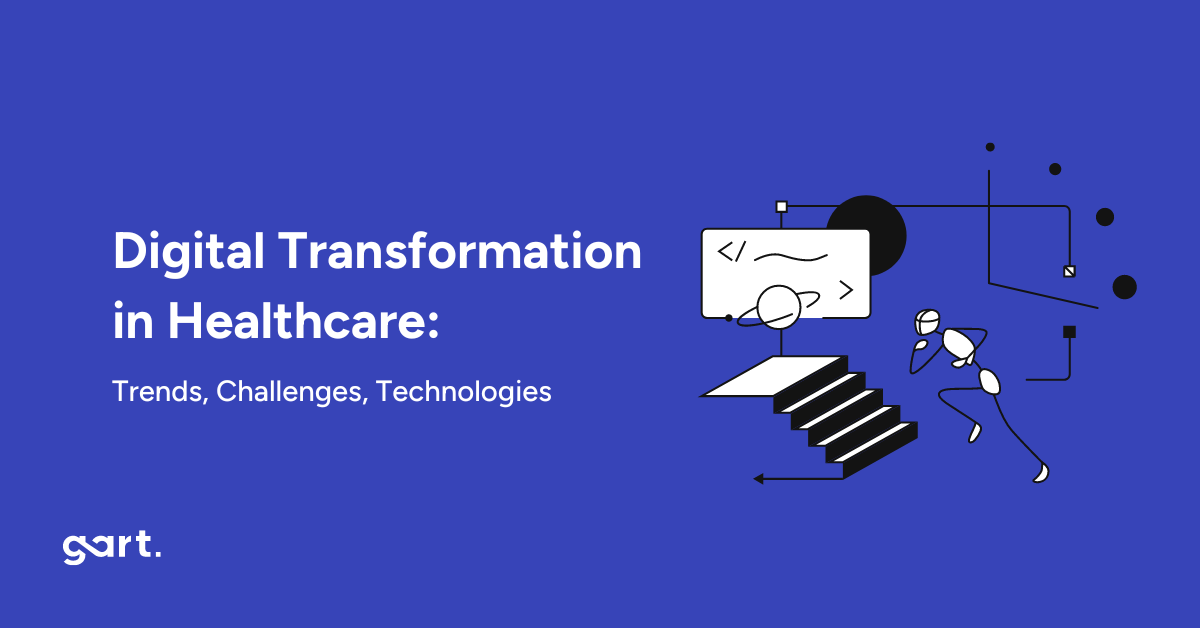
What is Digital Transformation in Healthcare?
Imagine walking into a hospital where your medical records are instantly accessible on a secure digital platform, doctors consult you virtually from anywhere, and AI systems analyze your blood tests to predict diseases before symptoms appear. That’s digital transformation in healthcare.
In simple terms, it refers to leveraging technology to revolutionize how healthcare is delivered, managed, and experienced. It involves integrating digital solutions like electronic health records (EHRs), telemedicine, AI diagnostics, IoT-connected devices, and robotic surgeries to improve patient care, operational efficiency, and medical outcomes.
Why is it Gaining Momentum Globally?
The COVID-19 pandemic accelerated healthcare digitization, but the momentum continues due to:
Rising Patient Expectations:Today’s patients demand convenience, accessibility, and personalized care, just like their experiences with Amazon or Netflix.
Technological Advancements:AI, IoT, and big data analytics have matured, making them viable for large-scale healthcare applications.
Cost Pressures and Resource Constraints:Hospitals face financial constraints and staff shortages. Digital transformation optimizes workflows, reducing costs while improving quality.
Regulatory Push:Governments and health bodies globally are mandating secure digital health records, telemedicine, and interoperability standards to improve national healthcare systems.
A Statista report projects the global digital healthcare market to reach $504.4 billion by 2025, underscoring how essential digital transformation has become for competitive and efficient healthcare delivery.
88% of healthcare technology leaders prioritize improving the patient experience in their investments (according to a Deloitte survey)
This shift underscores the necessity for healthcare professionals, including doctors, nurses, and administrative staff, to stay abreast of ongoing digital advancements.
Key Drivers of Digital Transformation in Healthcare
Emerging Technologies Shaping Healthcare
Technological innovations are the backbone of healthcare’s digital transformation. Here’s how the main technologies are driving change:
AI (Artificial Intelligence)
AI is revolutionizing healthcare by:
Automating administrative tasks like record-keeping and billing
Enhancing predictive diagnostics by analyzing medical images for early disease detection
Personalizing treatment plans based on patient history, genetics, and lifestyle
Enabling AI-powered chatbots to handle appointment scheduling, symptom checks, and medication reminders, reducing the burden on human staff
For example, AI diagnostic platforms like Google DeepMind Health detect eye diseases with the same accuracy as ophthalmologists, enabling earlier intervention and better outcomes.
IoT (Internet of Things)
IoT-connected health devices include:
Wearables: Smartwatches and fitness trackers monitor heart rate, oxygen saturation, and sleep cycles, alerting users to anomalies.
Remote Patient Monitoring Devices: Track vitals for chronic patients, reducing hospital visits while enabling proactive care.
Connected Hospital Equipment: Optimize operations by tracking equipment usage, availability, and maintenance schedules.
This improves real-time patient monitoring, operational efficiency, and resource utilization, making healthcare delivery smarter and more responsive.
Robotics
Robotics in healthcare enables:
Minimally invasive surgeries: Robotic surgical systems like da Vinci Surgical System enhance precision, reducing recovery time and hospital stays.
Remote surgeries: Surgeons operate robotic instruments from distant locations, expanding access to specialized care globally.
3D Printing
3D printing is transforming:
Prosthetics: Creating customized, affordable prosthetics quickly for amputees.
Implants and Organs: Producing tailor-made implants and researching bioprinted organs for transplantation.
These emerging technologies are not just futuristic concepts – they are real-world solutions enhancing healthcare daily.
Changing Patient Expectations and Demographics
Today’s patients are digital natives, especially younger demographics who expect:
Online appointment booking
Access to digital medical records
Telehealth consultations
Personalized health recommendations
With over 5.3 billion internet users globally, healthcare providers must adapt to digital-first expectations to remain competitive and patient-centric, as the demand for digital healthcare services is rising.
Updated Regulations Driving Adoption
Governments worldwide are introducing regulations to support digital transformation:
HIPAA (US): Mandates data privacy and security for protected health information (PHI).
GDPR (EU): Enforces strict data protection rules for personal data, including health records.
ISO/IEC 27799: Provides guidelines for information security management in healthcare.
Compliance with these standards is not optional. Healthcare providers must adopt digital solutions with built-in security and privacy measures to avoid legal repercussions and build patient trust.
Gart guides you through every step of the compliance process, providing the expertise, tools, and support you need. Contact Us.
Benefits of Digital Transformation in Healthcare
1. Reduced Costs - automating administrative tasks and other processes allows healthcare providers to save time and money while enhancing patient care. Through digital transformation, workflows are streamlined, and operational efficiency is increased, which helps reduce overhead costs.
2. Optimized Workflow - digital transformation has enabled healthcare providers to optimize their workflows. Automating tasks like patient information management and appointment scheduling allows medical staff to focus more on delivering effective patient care. Additionally, digital tools such as AI-powered chatbots can handle simple patient interactions, reducing the burden on physicians.
3. Enhanced Patient Interaction - digital transformation has empowered healthcare providers to interact with patients more effectively. Innovative technologies enable health professionals to easily access patient records, aiding in better diagnosis and treatment. Moreover, digital solutions like telemedicine allow doctors to offer timely medical advice even when they are not physically present at the hospital or clinic.
4. Improved Administration - digitizing processes makes managing administrative tasks more efficient for healthcare organizations. Automation of activities like scheduling appointments, filing insurance claims, and maintaining accurate financial records reduces manual errors while improving accuracy and speed.
Challenges to Healthcare Digital Transformation
Data Privacy and Security Concerns
Healthcare deals with highly sensitive patient data. Digital systems, if not secured, can be vulnerable to cyberattacks, risking:
Data breaches exposing personal health information
Compliance violations leading to hefty fines
Loss of patient trust and reputational damage
Implementing robust cybersecurity frameworks, encryption, and continuous monitoring is non-negotiable for digital health systems.
Resistance to Change within Organizations
Healthcare has traditionally been conservative in adopting new technologies. Reasons for resistance include:
Fear of disrupting established workflows
Lack of digital literacy among staff
Concerns about technology reliability during critical care situations
Change management, leadership support, and comprehensive staff training are essential to overcome this barrier.
Interoperability and Legacy System Integration
Most healthcare organizations run on legacy systems that do not integrate easily with modern digital applications. Challenges include:
Data silos are hindering unified patient views
Incompatibility with new software or cloud platforms
High costs and risks are associated with migrating from outdated systems
Adopting interoperability standards like HL7 FHIR and working with experienced technology partners can mitigate these challenges.
Skills Gaps and Staff Shortages
Digital transformation requires staff to be digitally proficient. However, many healthcare professionals:
Lack of training in new digital tools and platforms
Feel overwhelmed by technological complexity, which affects adoption rates
Continuous upskilling programs and user-friendly solutions can bridge the skills gap and enhance digital confidence among healthcare staff.
Successful Cases of Digital Transformation in Healthcare
1. Infrastructure Optimization and Data Management in Healthcare
Challenge
A health tech company came with outdated infrastructure that hindered efficient data management and slowed down critical operations. The existing system was not scalable and faced frequent downtimes, affecting the overall patient care experience.
Solution
Gart Solutions implemented a comprehensive infrastructure optimization strategy, including:
Modernizing legacy systems to enhance speed and scalability
Integrating cloud solutions for seamless, secure data management
Ensuring HIPAA compliance for patient data security
Enabling dynamic scaling to meet demand spikes efficiently
Impact
Faster data access, reduced downtimes, improved operational efficiency, and enhanced patient experiences.
Learn details from the Case Study.
2. CI/CD Pipelines and Infrastructure for E-Health Platform
Challenge
An e-health platform aimed to accelerate their development process and improve the reliability of their applications. However, they faced significant challenges with manual deployments, which were time-consuming and error-prone, leading to inconsistent performance and delayed updates.
Solution
Gart Solutions designed and implemented automated CI/CD (Continuous Integration/Continuous Deployment) pipelines tailored to the platform’s unique architecture.
Key implementation steps included:
Automated Build and Testing Pipelines:Code commits automatically triggered builds, testing suites, and static code analysis to catch bugs early.
Infrastructure Optimization:Upgraded and containerized infrastructure to support CI/CD operations efficiently with Kubernetes orchestration for scalability.
Deployment Automation:Introduced automated deployment scripts for seamless rollout of features across production and staging environments without downtime.
Monitoring and Rollback Strategies:Integrated real-time monitoring tools with automated rollback protocols to ensure rapid issue remediation in case of deployment failures.
Impact
Reduced deployment times from days to hours
Significantly minimized human errors, enhancing application stability
Improved development velocity, allowing frequent feature releases
Increased user satisfaction due to faster bug fixes and feature updates
This case demonstrates that CI/CD pipelines aren’t just DevOps best practices – they are strategic enablers of digital agility in healthcare platforms, ensuring compliance, security, and innovation at scale.
Struggling with digital transformation for your healthcare project? Get expert guidance and IT Consultancy for your project free of charge. “Quick wins” – guaranteed. Contact Us.
How Digital Transformation Enhances Patient Experience
Telehealth and Remote Consultations
Imagine consulting your doctor while sipping coffee at home, with prescriptions emailed within minutes. That’s the new healthcare reality.
Telehealth is among the most impactful transformations in healthcare, enabling:
Remote Consultations: Patients consult doctors without visiting clinics, saving time, reducing exposure to infections, and increasing accessibility for remote populations.
Mental Health Services: Telepsychiatry platforms provide discreet, accessible therapy sessions, crucial in an era of rising mental health challenges.
Chronic Disease Management: Regular remote check-ins for diabetes, hypertension, and other chronic conditions enable proactive care, preventing complications and hospital admissions.
During the pandemic, telehealth usage surged by over 154% compared to pre-pandemic levels (CDC data) and continues to grow as patients demand convenience and digital-first care experiences.
Personalized Medicine and AI Diagnostics
Digital transformation enables hyper-personalized treatments tailored to individual patient profiles by leveraging:
AI Diagnostics:AI algorithms analyze radiology images, blood tests, and genetic data to detect diseases earlier than traditional methods. For example, IBM Watson Health analyzes patient records to recommend tailored treatment options for oncologists.
Genomic Medicine:Advances in data processing allow healthcare providers to customize medications and treatments based on patient genetics, enhancing efficacy and minimizing side effects.
Predictive Analytics:Big data analytics predict patient risks, enabling early interventions for conditions like sepsis, cardiac events, or diabetic complications.
Patients no longer experience generic treatment plans but benefit from precision medicine designed for their unique biological and lifestyle factors, resulting in improved outcomes and satisfaction.
Get a sample of IT Audit
Sign up now
Get on email
Loading...
Thank you!
You have successfully joined our subscriber list.
Conclusion
Healthcare organizations understand that digital transformation is crucial for enhancing healthcare services and strengthening patient relationships. Beyond technology investments, this transformation necessitates a shift in organizational culture and employee engagement, requiring enterprise-wide involvement.
Leading health organizations are adopting six key strategies to advance digitally:
Establish digital leadership and governance aligned with business strategies.
Cultivate a digital culture supported by leadership at all organizational levels.
Develop next-generation talent with a focus on workforce quality and quantity.
Integrate cybersecurity at all stages for robust risk management.
Emphasize flexibility and scalability to adapt to evolving technologies.
Implement measurable, accountable KPIs to track the success of digital initiatives.
Successfully navigating digital transformation in healthcare requires expertise and a business-first approach of IT Consulting.
Gart Solutions can guide healthcare providers through the process of Digital Transformation, accelerating the adoption of digital healthcare technologies and improvement of patient outcomes.
Contact Gart today to learn more about how we can help you solve the challenges of digital transformation in healthcare.
